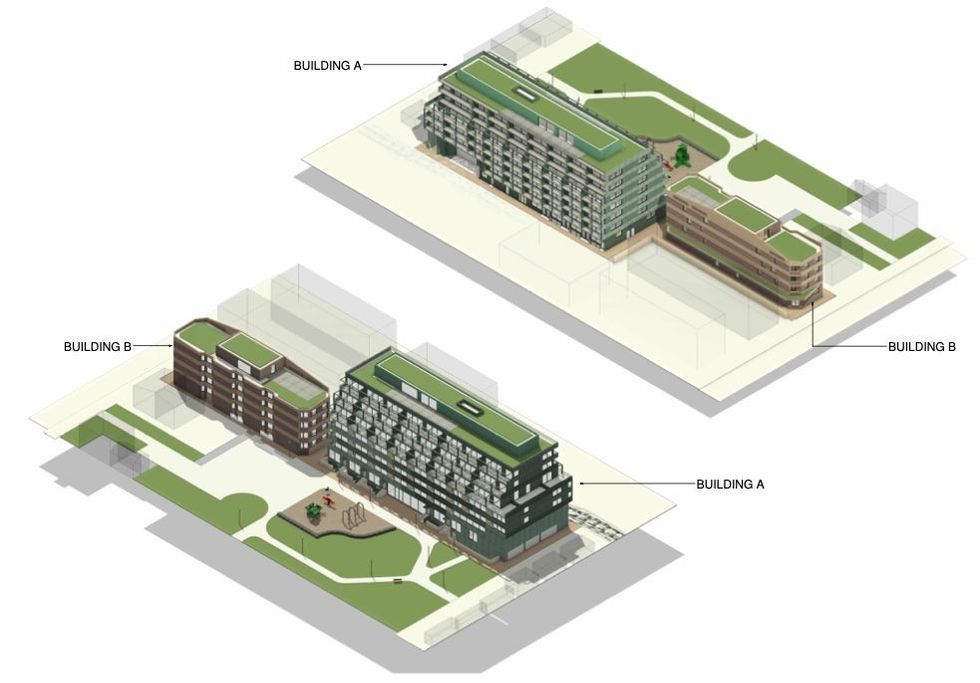Toronto’s purpose-built rental vacancy plunged to 1.7% in 2022, underlining the need for more dedicated rental stock in the city. As such, a purpose-built rental development, recently proposed for a site in Leslieville, comes at a good time.
At the tail end of last year, a rezoning application was submitted to the City on behalf of Laing Sears Holdings Inc. with respect to an 0.25-hectare property municipally known as 46R, 50, 52 and 52R Laing Street.
The proposal outlines plans to intensify the site -- described in the application as being “largely vacant” save for two detached houses on its easterly edge -- by adding two new purpose-built rental residential complexes: a seven-storey “sculpted” building, occupying the majority of the site with frontage on Sears Avenue, and a four-storey building fronting Laing Street.
At its highest point, the development would extend 24.5 m. Jointly, the buildings would contain a total gross floor area of 8,814.8 sq. m and 130 purpose-built rental units, 41.5% of which would be family-sized units. More specifically, the units would be a mix of 20 studios, 58 one-bedrooms, 37 two-bedrooms, and 15 three-bedrooms.
The planning rationale prepared in support of the application also states that the developer is exploring opportunities to make around 20% to 30% of the units affordable.

To take full advantage of the neighbouring Maple Leaf Park, balconies are proposed along the south facade on the second floor and up, inset balconies are proposed along the north facade on the second to fourth floors, and terraces are slated for floors five, six, and seven.
In addition, 542 sq. m of residential amenity space is proposed, 320 sq. m of which would be located indoors and 222 sq. m of which would be located outdoors.
The rationale goes on to state, “the proposed development represents good planning and urban design, and offers an opportunity to redevelop an underutilized site with new purpose-built rental housing, some of which is intended to be affordable, significantly increasing housing options in the area and optimizing the use of land and the public investment in transit infrastructure.”





















